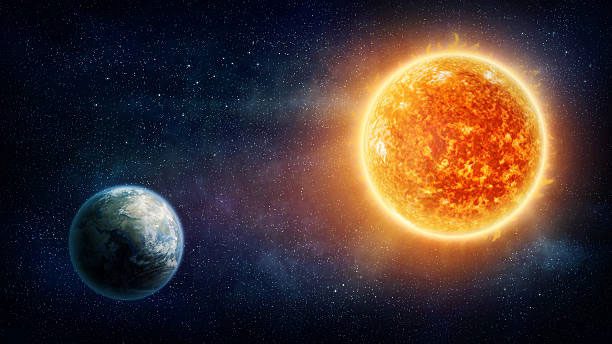The average distance between Earth and the Sun is steadily increasing, with the leading suspicion being that our parent star is losing mass.
The distance between Earth and the Sun is not stable due to its elliptical orbit, but over the years, scientists have calculated the average distance to be 150 million kilometers, according to NASA. However, this figure is changing, gradually increasing over time.
According to Live Science, the top two reasons scientists propose are that the Sun is losing mass, or a similar force related to Earth’s tides.

Is Earth gradually “drifting” away from the embrace of its parent star? – (Illustrative image from iStock)
According to NASA, our parent star has about 5 billion years left in its lifespan. During this remaining time, models of stellar evolution suggest it will lose about 0.1% of its mass before it dies.
Astronomer Brian DiGiorgio from the University of California, Santa Cruz, explains: “The figure of 0.1% is actually quite significant for the Sun’s mass. This 0.1% is equivalent to the mass of Jupiter, which is 318 times the mass of Earth.”
The gravitational force of a celestial body is proportional to its mass, so it is likely that the gravitational pull from the parent star has decreased, leading to Earth drifting further away.
According to Associate Professor of Astrophysics Britt Scharringhausen from Beloit College in Wisconsin, the Sun rotates on its axis approximately every 27 days, which is not in harmony with Earth’s 365-day rotation. This, combined with the gravitational interactions of Earth itself, creates a peculiar tidal bulge that gradually affects the planet’s orbit, pushing it away from the parent star.
However, this effect is minimal, only causing Earth to move 0.0003 cm per year, so the loss of mass from the parent star remains the primary factor.
The drift of Earth away from the parent star is not believed to significantly impact the climate. In the next 5 billion years, the distance will increase by 0.2%, corresponding to a decrease of 0.4% in the solar energy reaching Earth. But this number is small compared to the seasonal variations caused by Earth’s elliptical orbit.
The real apocalypse can only occur after another 5 billion years, when the Sun enters its dying phase—a red giant that will grow larger before collapsing. At that point, the heat radiating towards Earth will increase rapidly, causing the oceans to boil and putting life at risk of extinction.





















































